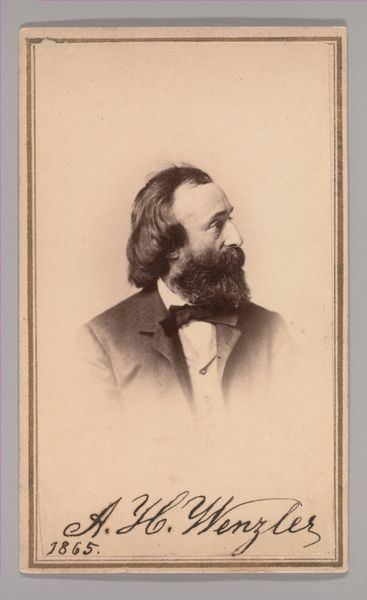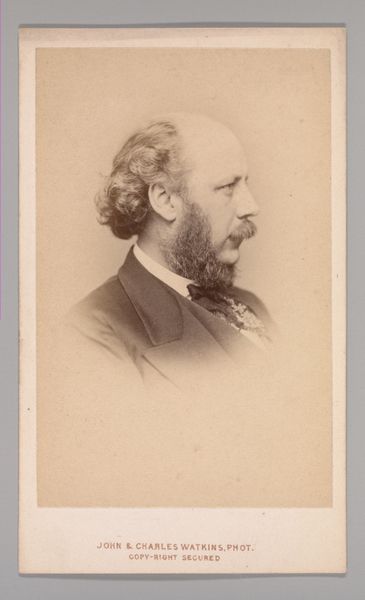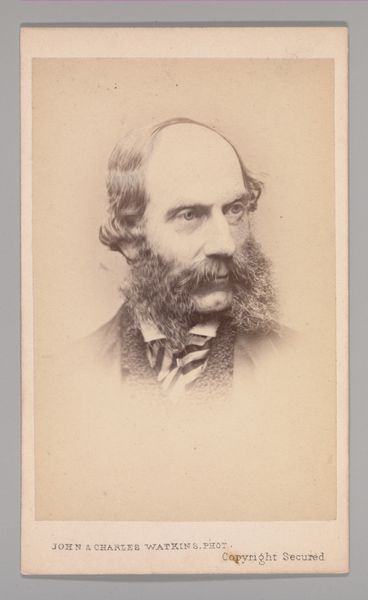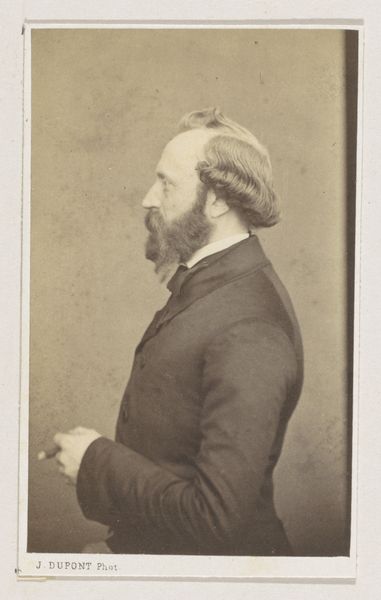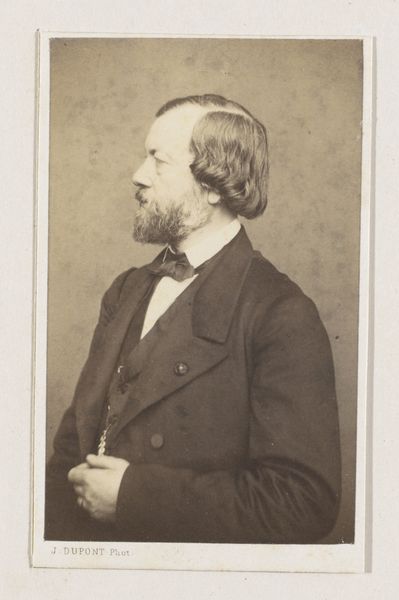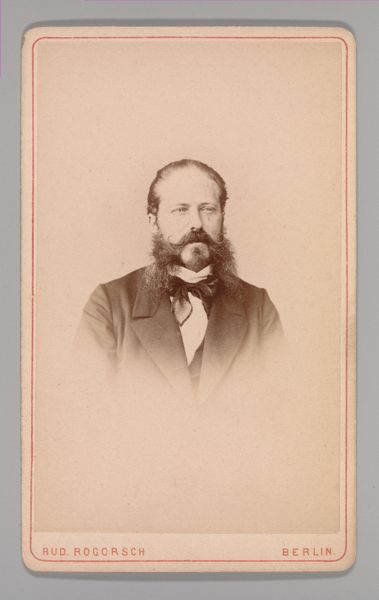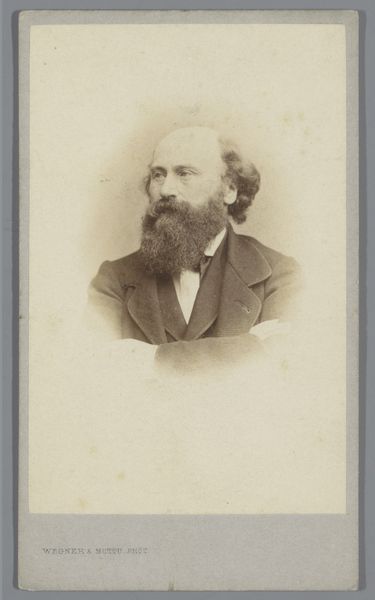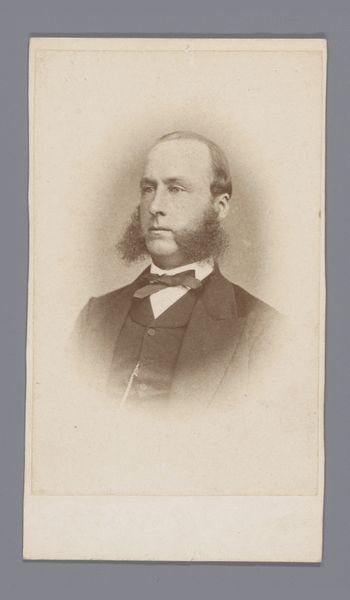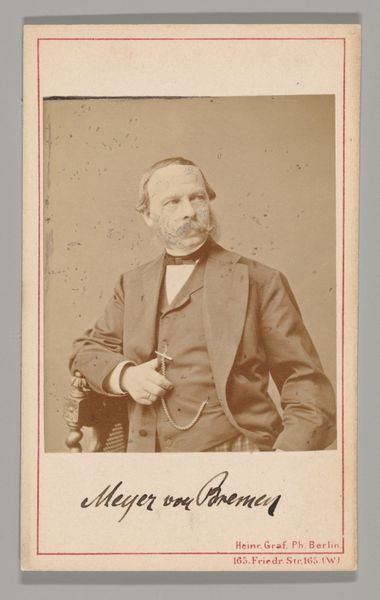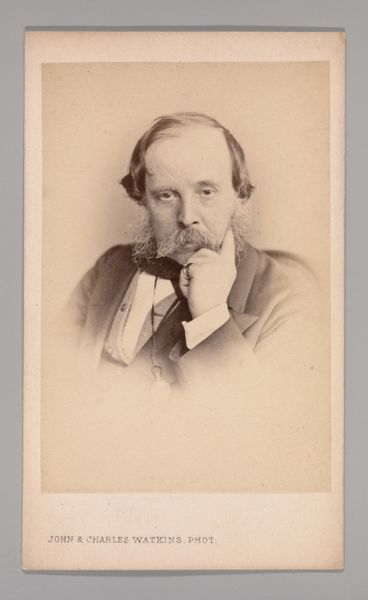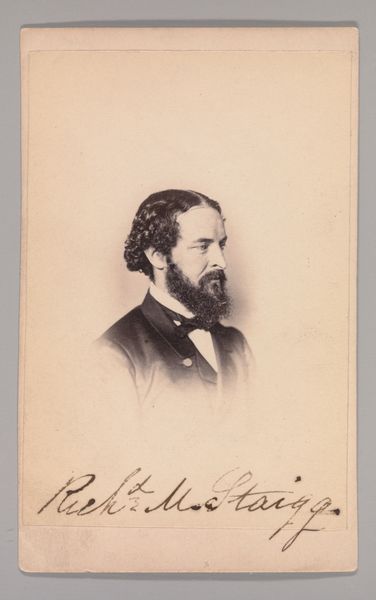![[William Edward Frost] by John and Charles Watkins](/_next/image?url=https%3A%2F%2Fd2w8kbdekdi1gv.cloudfront.net%2FeyJidWNrZXQiOiAiYXJ0ZXJhLWltYWdlcy1idWNrZXQiLCAia2V5IjogImFydHdvcmtzLzVjNzE4OTVjLWE0ZmYtNDNhOC04ODY0LTczYzEwYWM5N2NhMS81YzcxODk1Yy1hNGZmLTQzYTgtODg2NC03M2MxMGFjOTdjYTFfZnVsbC5qcGciLCAiZWRpdHMiOiB7InJlc2l6ZSI6IHsid2lkdGgiOiAxOTIwLCAiaGVpZ2h0IjogMTkyMCwgImZpdCI6ICJpbnNpZGUifX19&w=3840&q=75)
daguerreotype, photography
#
portrait
#
daguerreotype
#
photography
#
men
#
profile
Dimensions: Approx. 10.2 x 6.3 cm (4 x 2 1/2 in.)
Copyright: Public Domain
Curator: Welcome. We’re looking at an 1860s daguerreotype portrait of William Edward Frost, by John and Charles Watkins, residing here at the Metropolitan Museum of Art. The subtle monochromatic tones draw the eye into the frame so elegantly. Editor: It evokes a strong sense of reserved Victorian formality and a hint of melancholic quiet. One can sense how much studio portraits were steeped in posing expectations! Curator: Exactly. Consider the sharp profile view, the rigid angle of the man's body offset by soft curls in his hair and facial hair. These careful formal considerations offer balance within the small frame of this piece. The photographer skillfully works with the tonal scale, utilizing contrasts that brings the image to life despite the stillness required for daguerreotypes. Editor: Indeed. But that rigidity can be interrogated, can't it? This portrait exists within a wider history of Victorian representation where gender roles, class, and respectability were performative, particularly in front of the camera. Frost presents an outward facing portrait which signifies access to class status which should make us also wonder about other people in that historical moment who would not be the focus of artistic endeavors. Curator: Interesting point. From my view, though, the formal considerations elevate the work beyond simple representation. Look how the delicate feathering of the light softens the edges. Editor: Well, looking at this from a different lens, doesn't it remind you of the colonial project of objectifying individuals as visual subjects rather than valuing their intrinsic worth? It reminds me that throughout history not everyone gets the grace that artists give people they paint or photograph and who they select matters! Curator: Even so, that level of interpretive engagement has less impact than seeing what it represented from a strictly artistic perspective—this medium captures details with a resolution unmatched at the time. Every texture, from the fabric of his coat to the minute hairs of his beard, is rendered with astonishing clarity. Editor: And, like with the majority of art from this time period, thinking about its role historically should compel us to re-examine inherited notions of beauty and success! It reveals subtle and more complex power structures inherent in that world which must influence our interpretations in the present. Curator: Your point about the image acting as an artefact is very astute! It brings out more to be pondered when one studies Frost's solemn profile through an entirely different, less aesthetic, gaze.
Comments
No comments
Be the first to comment and join the conversation on the ultimate creative platform.
